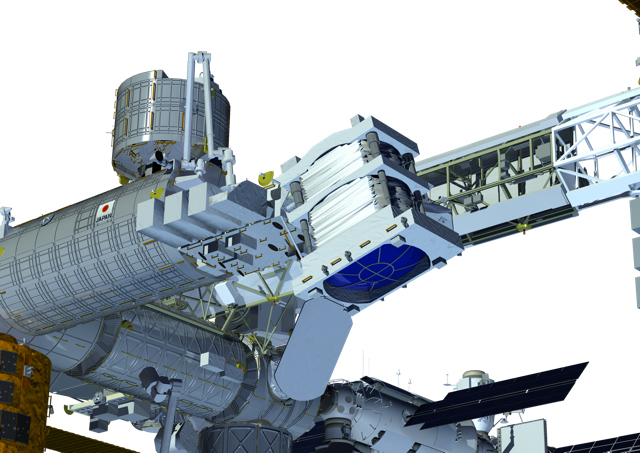GOLDEN, Colo., March 6, 2013 – Colorado School of Mines will participate in a $4.4 million NASA grant that will help researchers develop a telescope to be deployed on the International Space Station to detect extreme energy cosmic rays.
 The Extreme Universe Space Observatory on board the Japanese Experiment Module (JEM-EUSO) is the first mission devoted to detect extreme energy cosmic rays – particles whose origin remain unknown – from space. The telescope, which is expected to be deployed in 2017, will measure the properties of these cosmic rays by recording the UV light produced by the air showers they produce in the Earth's atmosphere.
The Extreme Universe Space Observatory on board the Japanese Experiment Module (JEM-EUSO) is the first mission devoted to detect extreme energy cosmic rays – particles whose origin remain unknown – from space. The telescope, which is expected to be deployed in 2017, will measure the properties of these cosmic rays by recording the UV light produced by the air showers they produce in the Earth's atmosphere.
NASA selected Mines, along with partners at NASA’s Marshal Space Flight Center and the University of Alabama, Huntsville, to design and develop a global network of light flashers and lasers These ground based light sources will be used to benchmark and monitor the observatory as it orbits the earth.
The Mines group, led by Physics Associate Professors Lawrence Wiencke (principal investigator) and Fred Sarazin, will help select suitable locations around the world and develop, install and maintain the laser stations of the Global Light System (GLS) array.
“The energies of these cosmic particles extend more than 10 orders of magnitude beyond the energies of man-made accelerators,” said Wiencke. “Understanding the observatory will be key to understanding the cosmic accelerators, this is why the GLS array will be so important. It’s also a great match for the Mines group because it builds on our experience with laser techniques and cosmic ray detectors.” Wiencke is currently in Malargüe, Argentina, with Mines graduate students Eric Mayotte and Carlos Medina leading the upgrade of the central laser facility at the Pierre Auger Cosmic Ray Observatory.
The JEM-EUSO footprint will pass over a GLS unit on average once per near-moonless night under clear conditions over appropriately selected sites, Wiencke said.
“The GLS locations need to be representative of the different climates around the world, because the development of the air showers depends upon the general properties of the atmosphere where it occurs,” said Sarazin.
As part of this grant, the Mines group is developing a laser system that will be flown in an aircraft to test a JEM-EUSO prototype that will flown in a high altitude balloon in 2014.
Other Project partners on this grant include the University of Chicago and the University of Wisconsin, Milwaukee. In all, 13 countries, 77 institutions and as many as 280 researchers are working on this mission.
For more information, see:
JEM-EUSO collaboration homepage
Contact:
Karen Gilbert, Director of Public Relations, Colorado School of Mines / 303-273-3541 / KGilbert@mines.edu
